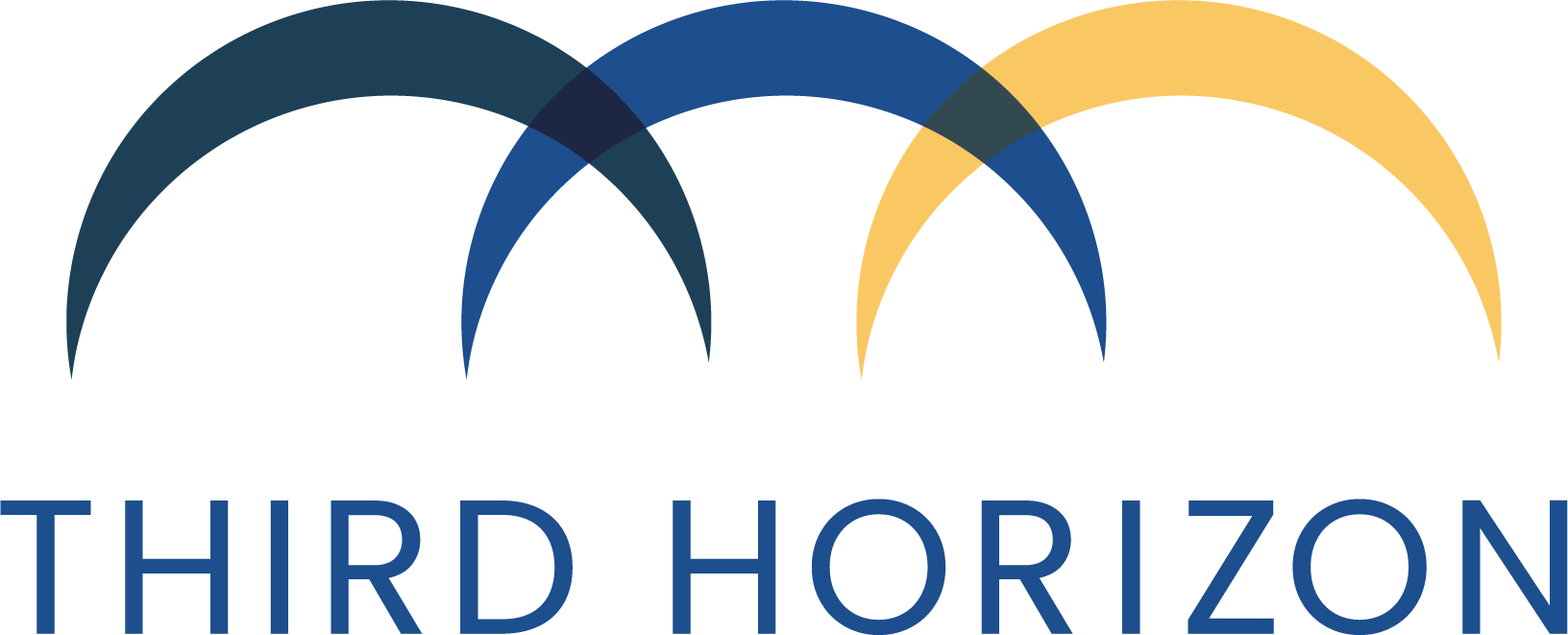You’re reading Third Horizon’s 2025 monthly blog series on health care innovation and resilience. Throughout the year, we will bring our unique perspective to bear across our three advisory areas: Behavioral Health, Community Health, and Payment Design and Analytics.
This month’s focus: Behavioral health funding challenges and strategic responses for providers in an uncertain policy landscape.
Listen to the article
By Eric Bailly, LADC, LPC, Senior Director; Tym Rourke, MA, Managing Director for Community Health; and Topher Rasmussen, MSW, Communications Manager
The behavioral health funding landscape is shifting beneath our feet. From proposed Medicaid restructuring to initiatives like the Department of Governmental Efficiency (DOGE), providers face a challenging reality: the funding they have relied on is becoming increasingly inconsistent and unpredictable. If you experienced heartburn reading headlines about potential cuts or changes to behavioral health funding, you are not alone.
But here’s the good news: preparation for the storm beats panic every time.
This isn’t the first storm the behavioral health sector has weathered when it comes to funding uncertainty, and it won’t be the last. What separates organizations that merely survive from those that survive and thrive is their approach to funding volatility. Let’s dive into practical strategies that can help your organization build resilience, regardless of which way the political winds blow.
Getting Ahead of Funding Changes: Know Your Exposure
Action Step #1: Conduct a “funding vulnerability audit.” Map out exactly how much of your revenue comes from sources that could be affected by proposed changes. Break it down by program and service line.
Action Step #2: Connect with your policy lifelines now—before changes hit. For example,
- join your state behavioral health provider association if you haven’t already
- engage actively with the National Council for Mental Wellbeing’s policy alerts
- identify the specific lawmakers on committees overseeing health care funding in your state
- schedule quarterly meetings with your representatives’ health policy staffers
Action Step #3: Study the early indicators. Some states have already implemented work requirements or received waivers for experimental Medicaid programs. What happened to the impacted behavioral health providers in those states?
Consider these real-world examples:
- Arkansas (2018-2019): The first state to fully implement Medicaid work requirements, Arkansas saw over 18,000 people lose coverage before a federal judge intervened. Studies found people with behavioral health conditions were disproportionately affected. Providers reported increased uncompensated care and disruptions in treatment continuity, especially for patients with opioid use disorders who lost access to medication-assisted treatment.
- Indiana (2019-2020): Though coverage suspensions were delayed and never fully enforced, behavioral health providers proactively educated patients about reporting requirements. Simultaneously, they leveraged the state’s IMD waiver flexibility to expand access to residential substance use disorder treatment, increasing Medicaid reimbursements for inpatient care.
- Georgia (2023-Present): The only state currently enforcing work requirements, Georgia has seen enrollment far below projections (under 6,000 vs. expected 250,000+).[1][2] This suggests significant barriers for people with behavioral health conditions who often face employment challenges, leaving providers to serve more uninsured patients than anticipated.
Action Step #4: Develop scenario-based response plans with clear activation triggers. For example: “If policy X passes, we will implement strategy Y within Z days.”
Don’t Put All Your Eggs in One Basket: Diversify Your Funding
Action Step #1: Analyze your current payer mix and identify realistic opportunities to rebalance.
- Could you serve more commercially insured clients without compromising your mission?
- Are there employer assistance programs (EAPs) in your area looking for quality behavioral health partners?
- Have you explored value-based care arrangements with local payers?
Action Step #2: Map your local philanthropy landscape. Many foundations shifted focus to mental health during the pandemic and have maintained that interest.
Action Step #3: Build your reserves—even modest ones. Organizations with 60 days of operating expenses in reserve weather funding disruptions significantly better than those operating on a month-to-month basis.
Know Which Funding is More Secure: Not All Dollars Are Created Equal
Action Step #1: Categorize your funding streams by their level of protection:
- Statutorily protected: Funding mandated by law, requiring congressional action to change
- Administrative discretion: Funding that can be modified by agency decisions or executive orders
- Time-limited grants: Funding with specific end dates requiring renewal
- Competitive funding: Resources you must regularly compete to maintain
Action Step #2: Become an active voice in policy conversations that affect your most vulnerable funding streams.
- partner with other providers to craft joint policy position papers
- prepare client impact statements that illustrate what funding changes would mean in human terms
- invite policymakers to tour your facility and meet the people their decisions will affect
- participate in your state association’s “Hill Days” or advocacy events
- keep on top of state level policy issues through engagement with the National Academy for State Health Policy (NASHP)
Real-world impact: When proposals were made to reduce substance use block grants in one Midwestern state, providers who could clearly demonstrate their programs’ impact on reducing ER visits and incarceration successfully advocated for funding preservation.
Action Step #3: Create a funding security timeline to visualize when different funding sources might face changes. Align your strategic planning cycle with this timeline to avoid making long-term commitments based on short-term funding.
Putting It All Together
- Stay informed but not paralyzed. Monitor policy developments without letting speculation drive decisions.
- Communicate strategically with staff, board members, and clients about potential changes.
- Build partnerships before they need them with diverse stakeholders.
- Amplify their voices through collective action via state associations, the National Council, Mental Health America, The National Academy for State Health Policy, the Alliance for Addiction Payment Reform, and NAMI
Remember: Funding storms have come and gone before. By understanding your vulnerability, diversifying your funding sources, and planning strategically, your organization can do more than just survive—you can build the resilience to thrive regardless of the funding forecast.
Want more insights like this? Sign up for Tea Leaves.
Need personalized guidance? Third Horizon offers customized financial resilience assessments for behavioral health organizations. Contact us to learn more.


